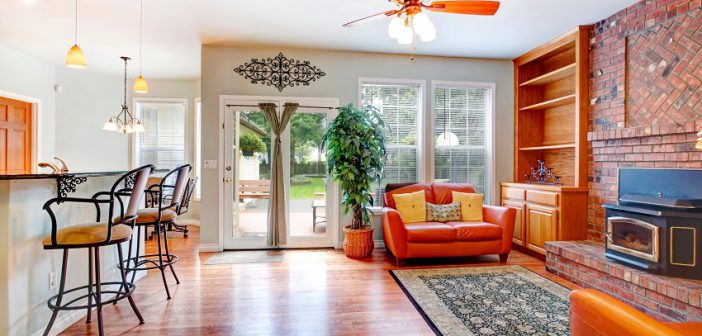Updating a vintage home presents a unique blend of challenges and opportunities for homeowners looking to preserve history while embracing modern comforts. These storied structures can serve as a testament to architectural legacies, each room containing narratives of bygone days. To successfully modernize an old house, it requires patience, a respect for its original craftsmanship, and a touch of creativity to seamlessly integrate contemporary amenities. The task of revitalizing these spaces is not just about aesthetic enhancement but also about ensuring the longevity and functionality of the property. Below, we explore how to breathe new life into such homes while honoring their intrinsic character.
Revitalizing Timeless Architecture While Preserving Character
When additions are needed, they must blend seamlessly with the vintage look. Experts in historical preservation can ensure that any new elements respect the home’s character. In cases where original features can’t be saved, detailed replicas can be made using durable modern materials. Even small updates—like a new LiftMaster garage opener—can modernize function without sacrificing style.
Essential Systems Upgrades for Modern Comforts in Antique Homes
Old homes often need major updates to their electrical, plumbing, and heating systems to meet modern safety and performance standards. Rewiring prevents fire hazards, while new plumbing reduces the risk of leaks and water damage. Swapping out outdated radiators and windows for efficient HVAC units and double-glazed panes can significantly improve comfort and lower energy costs.
For eco-conscious homeowners, geothermal heating and cooling offer a sustainable way to regulate indoor temperatures. Adding smart security features like LiftMaster systems, smart locks, and motion sensors boosts safety without altering the home’s vintage charm. Upgrading insulation and sealing drafts can also make a big difference in overall energy efficiency.
Incorporating Contemporary Design Elements in Historical Interiors
Blending contemporary design with historical interiors requires a delicate balance that highlights original architectural features. Thoughtfully selected modern furniture and sleek lighting can enhance, not overshadow, elements like woodwork or stone. Neutral color schemes offer a cohesive backdrop that supports both old and new, while bold colors can define zones or showcase modern art.
Updating older, compartmentalized layouts through selective wall removals can improve flow while respecting the home’s heritage. Flooring choices also offer creative flexibility—preserving hardwood in key areas while using modern materials like polished concrete or vinyl in others introduces contrast that complements traditional charm.
Navigating the Challenges of Renovating Aging Properties
Renovating vintage homes presents challenges like compromised structural integrity, outdated foundations, and hazardous materials such as lead paint and asbestos, all of which demand professional assessment and removal. Compliance with local preservation laws is another hurdle, requiring knowledgeable contractors and architects to navigate legal requirements.
Renovations often reveal unexpected issues, causing budget increases and project delays, so flexible timelines and contingency funds are essential. Throughout the process, clear communication with the renovation team is key. Homeowners must also strike a balance between updating the property and preserving its historical charm, ensuring the home remains both functional and true to its original character.
Overall, renovating a vintage home to incorporate modern comforts while honoring its historical roots is a journey through time, design, and personal expression. By carefully upgrading systems, introducing contemporary design elements, and navigating the challenges of old property renovation, one can create a living space that is both a tribute to the past and a comfortable, functional residence for the future.





ถ้าคุณกำลังมองหาทางเลือกใหม่ในการเลิกบุหรี่ หรือแค่อยากอัปเกรดประสบการณ์การสูบให้ล้ำขึ้น “เยว่เค่อ บุหรี่ไฟฟ้า” (Relx)
สำหรับผู้ที่ต้องการประสบการณ์การสูบแบบพรีเมียม RELX Infinity คือคำตอบที่สมบูรณ์แบบ
Promotional merchandise can play a creative role when breathing new life into vintage homes. Branded tools, tape measures, or eco-friendly notebooks can be given to contractors or home renovators as part of a thoughtful package. These items not only serve practical use during renovations but also carry your brand into the heart of exciting projects. Add your logo to useful merchandise and stay top-of-mind during every step of the home transformation journey.
Before starting your kitchen remodel, it’s essential to explore the latest trends that blend style and functionality. Open shelving continues to dominate, offering both convenience and a modern look. Bold cabinet colors, like deep blues and forest greens, add personality, while sleek quartz countertops ensure durability. Smart storage solutions, such as pull-out pantries, maximize space and keep your kitchen clutter-free. Statement lighting, including oversized pendants, brings a designer touch to your cooking space. For inspiration and expert guidance, visit https://mainecabinetcompany.com/ to explore innovative designs and high-quality craftsmanship. These trends will help you create a kitchen that’s both beautiful and practical for years to come.
I find restoring vintage homes deeply rewarding, blending old-world charm with modern functionality. Preserving tanning pool original features like hardwood floors or moldings adds character, while upgrades in plumbing, wiring, and insulation improve comfort. The key is respecting the home’s history while ensuring it meets today’s lifestyle and energy efficiency standards.
Mug printing can capture the charm of breathing new life into vintage homes, making it a perfect promotional tool for renovation businesses. Custom mugs featuring before-and-after images or inspiring quotes can connect with homeowners passionate about updating an old house. They offer practicality while reinforcing your brand’s story, much like a restored property blends history with modern style. These mugs make memorable gifts for clients, celebrating each home’s transformation and unique character.
The New York Times Crossword is a word puzzle game—specifically, a daily crossword puzzle—known for its high quality, clever clues, and increasing difficulty throughout the week.
That’s so true! We’re renovating our 1920s bungalow and the infrastructure upgrades are definitely the biggest (and priciest!) part. Balancing modern functionality with the original character is tough but rewarding. It’s like trying to make a perfect shot – takes skill and practice! Speaking of practice, anyone else obsessed with nailing those trick shots? I spend ages perfecting my moves on Basketball Stars. Gets me in the zone for those tricky reno decisions!
Ragdoll hit is an action game if you stop you will lose so you have to act continuously to pass different levels.
Harrogate Lock & Key specializes in keeping your home secure while you focus on transforming it. Whether restoring a vintage property or updating an old house, reliable locks and keys are essential for safety and peace of mind. From modern lock installations to emergency key services, their expert team ensures every door is protected. Just as thoughtful renovations bring new life to historic homes, proper security measures safeguard your investment.
Auto Locksmith training provides specialized skills in handling modern vehicle security systems, from transponder key programming to emergency lockout solutions. This training ensures technicians can tackle challenges with precision and speed, keeping drivers safe and stress-free. Breathing new life into vintage homes: updating an old house requires care and expertise, just like auto locksmiths mastering both classic and advanced systems to restore access, maintain security, and deliver trusted solutions in every situation.
These small but meaningful practices help restore emotional bonds that stress and routine may have eroded. The Baltimore Therapy Center emphasizes that intimacy is built in everyday interactions, from the way couples greet each other at the end of the day to how they handle disagreements. By focusing on rebuilding intimacy, partners rediscover the joy of companionship, which makes their marriage stronger and more resilient against future challenges.
Nice post !
génioplastie paris
Amazing post !
dr taher djemal site officiel